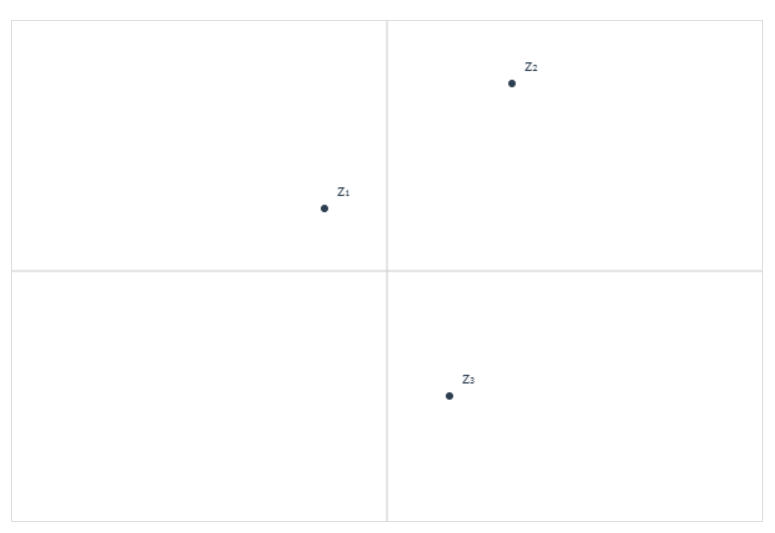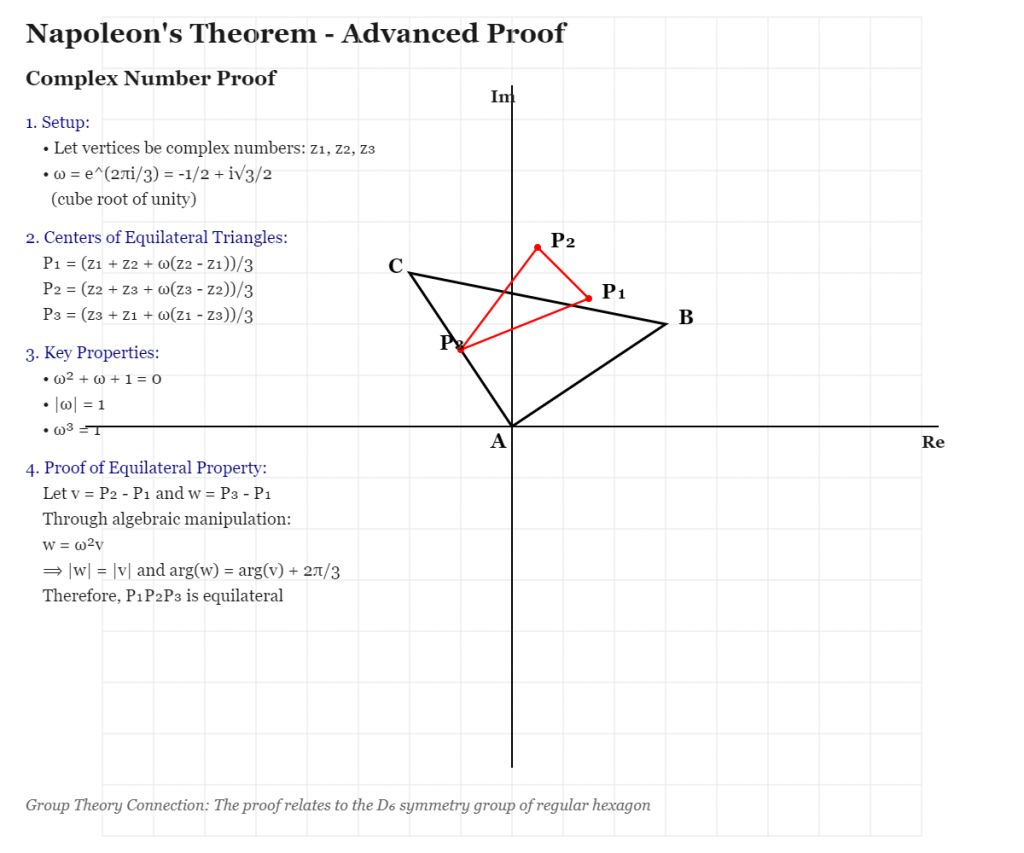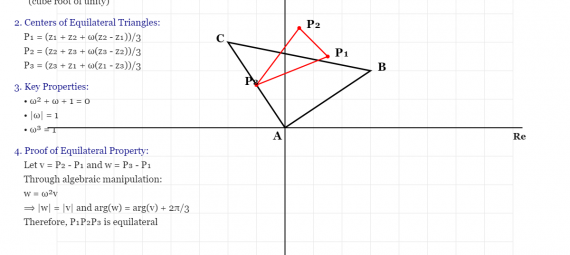weekly Problem no.5 in two difficulties
One of the most elegant results in geometry began with a surprising observation about triangles. Take any triangle – it doesn’t matter what shape or size – and build equilateral triangles on each of its sides (pointing outward). Now find the centers of these three equilateral triangles. When you connect these centers, you get another equilateral triangle!
This beautiful result is known as Napoleon’s Theorem, though there’s no clear evidence that Napoleon Bonaparte actually discovered it. The theorem works for any starting triangle – acute, obtuse, right, or even a quite irregular one. The resulting equilateral triangle is called the “Napoleon triangle.”
What makes this theorem fascinating is how it transforms any messy triangle into perfect symmetry. It’s like finding order in chaos. The centers of the constructed equilateral triangles somehow “know” to arrange themselves in perfect 60-degree angles, regardless of the original triangle’s shape.
Even more intriguingly, if you construct the equilateral triangles inward instead of outward, you get another equilateral triangle. The difference in areas between the outer and inner Napoleon triangles equals the area of the original triangle multiplied by a constant factor.
The proof of Napoleon’s Theorem can be approached in several ways:
- Through complex numbers, where rotations become elegant multiplications
- Using vector algebra and transformation matrices
- Via classical geometric arguments about similar triangles and rotations
For our weekly Problem Series, we have tasks for you to solve again. Could you share them in the comments?
Napoleon’s Theorem: Intermediate Challenge
Background
Napoleon’s Theorem reveals a fascinating property involving equilateral triangles constructed on the sides of any triangle.
Part 1: Construction and Proof
Given triangle ABC with vertices:
- Construct and calculate the vertices (D, E, F) of the outward equilateral triangles on each side.
- Find the centers (P, Q, R) of these equilateral triangles.
- Prove that PQR is equilateral using:
- Complex numbers method
- Vector algebra
- Classical geometric proof
Part 2: Analysis
- Express the area of PQR in terms of:
- The side lengths of ABC
- The area of ABC
- Prove that the ratio Area(PQR)/Area(ABC) is constant for all triangles ABC.
- Find the exact value of this ratio.
Part 3: Extension
Consider the inner Napoleon triangles (constructed inward) and prove that:
The next Task is hard level and can probably only be solved if you have some academic background where you deal with proofs in mathematics

Advanced Investigation of Napoleon's Theorem
Extended Napoleon's Theorem Challenge
Consider a complex-analytic approach to Napoleon's Theorem in the context of algebraic geometry and group theory.
Problem Statement:
Let T be any triangle in the complex plane with vertices at z₁, z₂, z₃ ∈ ℂ.
1. Starting with the complex coordinates:
z₁ = -1 + i
z₂ = 2 + 3i
z₃ = 1 - 2i
Tasks:
- Prove that if ω = e^(2πi/3) is the cube root of unity, then the centers of the outward equilateral triangles (c₁, c₂, c₃) can be expressed as:
c_k = z_k + (1-ω)(z_{k+1} - z_k)/3
- Show that the difference between the areas of the outer and inner Napoleon triangles is equal to the area of the original triangle multiplied by (2+√3).
- Prove that the centers of the Napoleon triangles form a group under complex multiplication when normalized relative to their centroid.
- Investigate the relationship between Napoleon's theorem and the Fermat-Weber point by:
- Expressing the coordinates of the Fermat-Weber point in terms of the centers of the Napoleon triangles
- Proving that this point minimizes the sum of distances to the vertices
- Consider the transformation group G that preserves the Napoleon configuration. Prove it's isomorphic to D₆ (the dihedral group of order 12) and explain its geometric significance.
- Bonus Challenge: Extend the theorem to non-Euclidean geometry by:
- Formulating an analogous statement in hyperbolic geometry
- Analyzing the limiting behavior as the hyperbolic curvature approaches zero
Additional Considerations:
- Consider using the theory of modular forms to analyze the geometric transformations
- Investigate the connection to elliptic curves when the vertices lie on a complex torus
- Examine the algebraic variety formed by the locus of Napoleon points as the original triangle varies
The Solution to our weekly Problem no. 5 is here. See it on the "weekly Problem" page!


